Low Leakage Current

Why Low Leakage Current Matters and How Relays Deliver It
In high-precision electronic systems, every nanoamp counts. Low Leakage currents, the small, unintended flow of current between the switch and the coil circuitry, and across the open switch, can cause major headaches in sensitive measurement and test applications. That’s why choosing switching components with minimal leakage is critical. Reed relays, particularly those from Pickering Electronics, offer some of the lowest leakage currents in the industry — often in the picoamp range. In this post, we’ll explore why that matters, which applications benefit most, and how Pickering relays are engineered for ultra-low leakage performance.
Why Low Leakage Current Matters
Leakage current becomes significant when:
- Measuring extremely low signals (e.g. nanoamps or microvolts)
- High density applications where the leakage current across each device can be in parallel with each other resulting in an overall high value.
- Performing high impedance measurements
- Using long hold times in sample-and-hold systems
- Testing insulation resistance or dielectric breakdown
- Working in electrometer-grade instrumentation or ion detection systems
- High Voltage applications – where higher working voltages can result in higher leakage currents. See the table below for more information.
In these contexts, even a few nanoamps of leakage can introduce unacceptable error, reduce measurement accuracy, or mask true signal behaviour.
Applications That Demand Ultra-Low Leakage
Reed relays with minimal leakage current are ideal for:
- Semiconductor parametric testers – Leakage skews voltage/current characteristics at nano/microamp levels.
- Data Acquisition Equipment – Noise can interfere with low-level signals.
- Medical instrumentation – Devices such as EEG or ECG monitors depend on precise low-level signal integrity.
- Electrometer and picoammeter designs – Require high isolation and virtually no leakage for sub-nanoamp accuracy.
- High impedance or floating node measurements – Where any parasitic path can affect results.
- Photodiode and ion chamber measurement systems – Where leakage could falsely increase the detected signal.
- Insulation resistance and breakdown testers – Where low leakage in the test path enables meaningful IR measurements in the teraohm range.
How Pickering Achieves Ultra-Low Leakage Currents
Many relay technologies, including solid-state relays, inherently suffer from higher leakage due to their semiconductor construction. Reed relays, by comparison, offer naturally superior isolation characteristics because their switching element is a physical gap between sealed contacts.
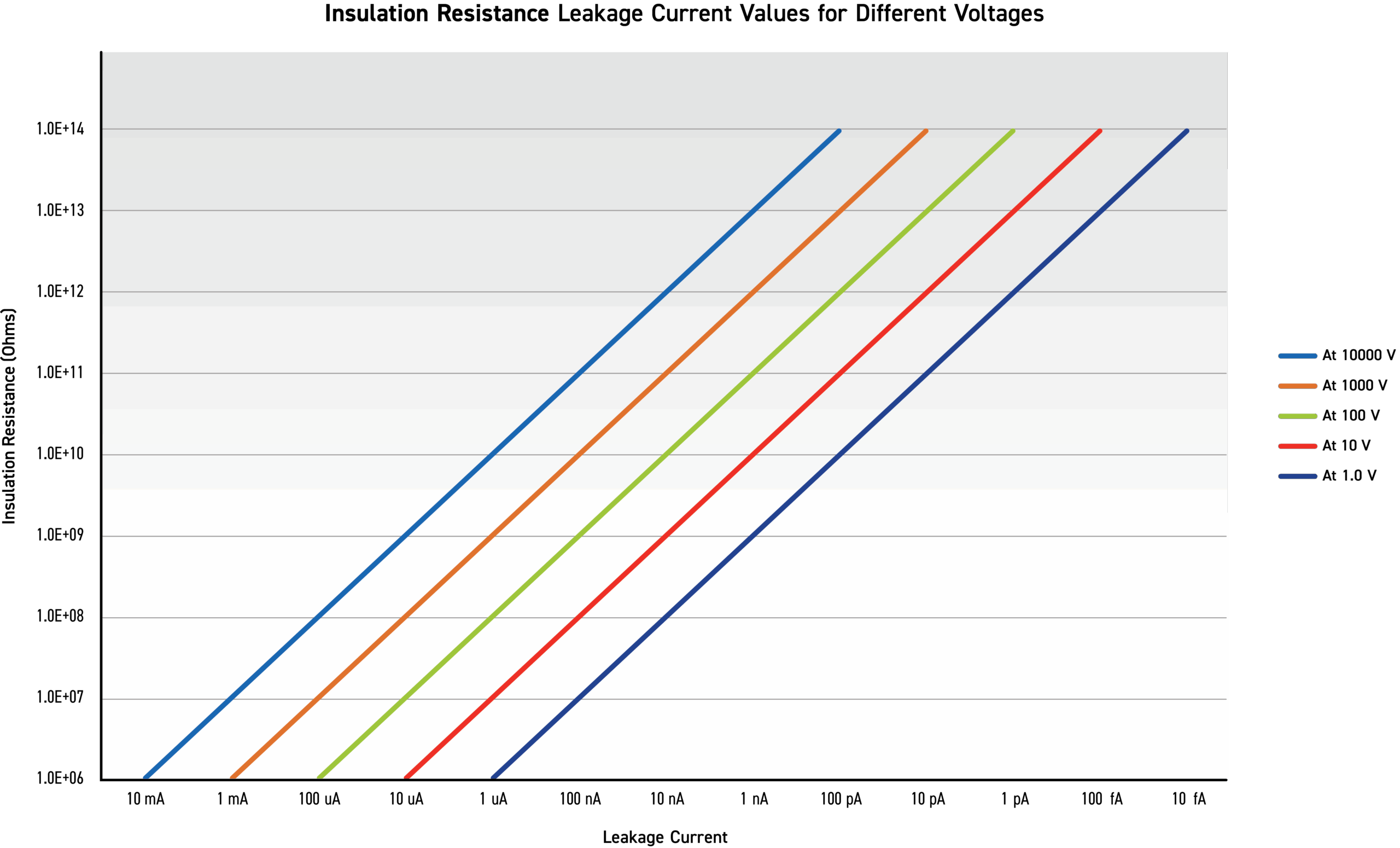
Pickering takes this a step further by optimizing every aspect of relay design for ultra-low leakage:
Hermetically Sealed Contacts
Our reed switches are sealed in an inert gas or vacuum environment, preventing oxidation, contamination, or moisture ingress — key causes of leakage.
Superior Insulation Materials
Insulation resistance on Pickering relays is measured in the Teraohm range (>1012 Ω), drastically reducing leakage even at elevated voltages.
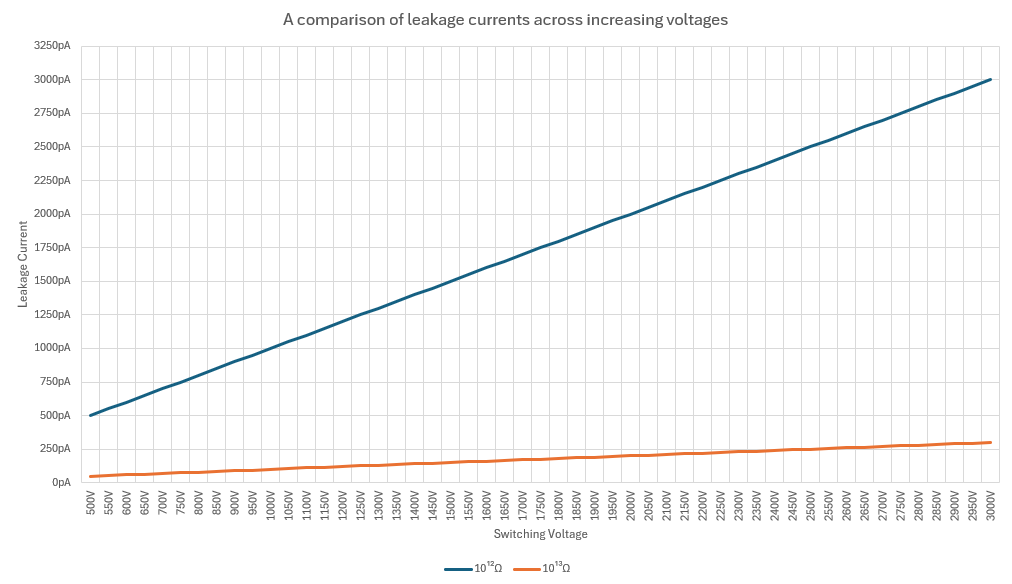
A comparison of leakage current for a device with 1012 insulation resistance compared to a device with a 1013 insulation resistance at increasing switching voltages
Careful Mechanical Design
Minimal creepage and surface paths between contacts and coil terminals reduces risk of leakage through PCB contamination or environmental conditions.
Extensive Testing
Every Pickering relay undergoes 100% testing for insulation resistance and leakage current to ensure consistent, ultra-low leakage performance.
Example Products
Pickering have many popular choices for low leakage applications, offering insulation resistance of >1012 Ω and open switch capacitance below 1pF. Please explore our range below.
For Applications Requiring High Density
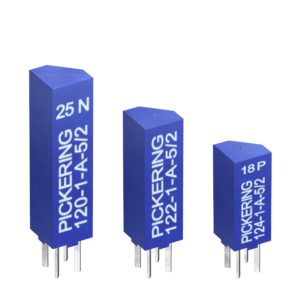
Ultra High Density 4mm Reed Relays
Switch current of 1A (up to 20W), and maximum carry current of 1.2A. Fast operate and release times (as low as 80μs or less) make these relays suitable for high-speed test systems. Body dimensions from (W x H x D): 3.9 x 9.5 x 3.9mm.

High Density Mini SIL Reed Relays
Maximum switch current of 1A (up to 20W), and the maximum carry current is 1.2A. Switches feature sputtered ruthenium contacts for long life and high reliability. Available forms: 1 Form A, 1 Form A Coax, 2 Form A, 1 Form B, and 1 Form C contact configurations.
For Data Acquisition Applications
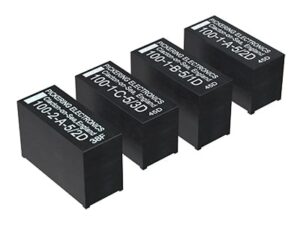
Series 100
Extremely low thermal EMF of 1 microvolt or less and low power consumption make these switches ideal for DAQ and portable equipment.
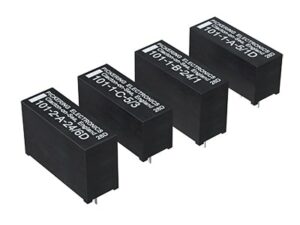
Series 101
High coil resistances up to 3000 ohms and requires a coil current of only 1.7 mA. Low thermal EMF, with some parts lower than 3 microvolts.
For High Voltage Applications
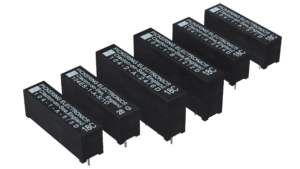
Series 104
Small high voltage reed relays in Form A and Form B. Up to 5kV stand-off, 1500 V switching. 5, 12 or 24 V coils. Suitable for transformer testing. Optional electrostatic shield.
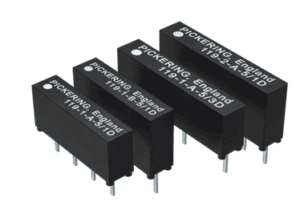
Series 119
Very small isolation reed relays in Form A and Form B configurations. Up to 3000 V stand-off, 1000 V switching. 3, 5 or 12 V coils. Suitable for cable testers.

Series 67/68
Option of PCB & flying lead connections in Form A and Form C Changeover. Up to 10 kV, 7.5 kV switching. High power 200 W switch available. 5, 12 or 24 V coils.
Standard Build Options & Custom Designs
Custom variants are also available for applications requiring tailored leakage characteristics or enhanced shielding. Please click here for more information.
In precision test, measurement, and medical systems, low leakage current isn’t a luxury, it’s a necessity. Reed relays from Pickering Electronics provide industry-leading performance through careful material choice, design expertise, and meticulous testing. Whether you’re measuring picoamps or switching high-impedance loads, Pickering helps keep your signal paths clean and your results accurate.

